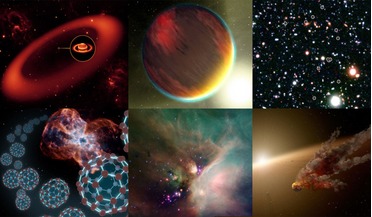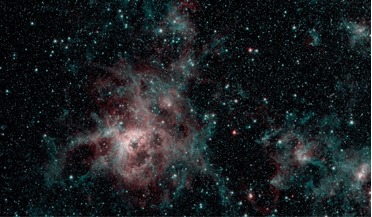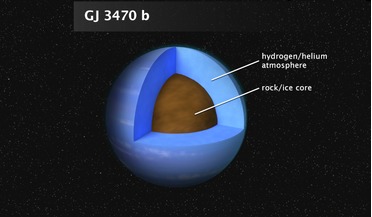 31 January 2020
A final farewell to NASA's Spitzer Space Telescope
31 January 2020
A final farewell to NASA's Spitzer Space Telescope
... the composition of interstellar dust. It also proved to be a powerful tool for detecting exoplanets and characterising their atmospheres. Spitzer's best-known work may be detecting the seven Earth-size planets in the TRAPPIST-1 system - the largest...
 May 2020
Space astronomy at the limits of technology
May 2020
Space astronomy at the limits of technology
...Great Observatories programme, a family of four space-based telescopes, each designed to observe the universe in a different waveband. Spitzer was launched in 2003 and, having exceeded its design lifetime by 14 years, was retired in January 2020. The...
 March 2021
Messier 82’s starburst magnetic highway
March 2021
Messier 82’s starburst magnetic highway
... of Messier 82, using the Hubble Space Telescope and the Spitzer Space Telescope, reveal hydrogen gas and infrared dust hitching a...bottom) from the Hubble Space Telescope and the Spitzer Space Telescope. The galactic superwind from the central...
 22 February 2017
NASA announces the discovery of first-ever exoplanet system with seven Earth-size planets
22 February 2017
NASA announces the discovery of first-ever exoplanet system with seven Earth-size planets
... first three planets in the system in May of 2016. Now, the European Southern Observatory's Very Large Telescope, Spitzer, has discovered the rest – bringing the total number of exoplanets in TRAPPIST-1 up to seven. The project team was...
 26 May 2016
Are primordial black holes the source of dark matter?
26 May 2016
Are primordial black holes the source of dark matter?
...team of astronomers, led by Alexander Kashlinsky, used NASA's Spitzer Space Telescope to explore the background glow of infrared light...easily produces the irregularity of the CIB detected in Spitzer data. "Depending on the mechanism at work, ...
 03 July 2019
New study reveals detailed exoplanet atmosphere
03 July 2019
New study reveals detailed exoplanet atmosphere
...uses the combined multi-wavelength capabilities of NASA's Hubble snd Spitzer space telescopes to understand its chemical make-up. Gliese 3470 b ... ago. Observation by NASA's Hubble and Spitzer space telescopes have chemically analyzed the composition ...